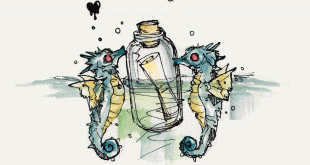Kiran Desai was born on 3 September 1971. She is an Indian author who is a citizen of India and a permanent resident of the United States. Her novel The Inheritance of Loss won the 2006 Man Booker Prize and the National Book Critics Circle Fiction Award. She is the daughter of the noted author Anita Desai. Biography Kiran Desai …
Read More »Which is the brightest Star?
The number of stars which one can see without telescope is about 6,000. Before the invention of telescope, only six magnitudes or degrees of brightness of the stars were recognized. Today with the help of telescope stars up to 21st magnitude can be seen. There are 22 stars of the first magnitude. The brightness of all stars is Sirius, having …
Read More »Which is our biggest bone?
The thigh bone. In an adult it is about twenty inches long.
Read More »Which invention improved both cookery and education?
An important development in the history of education was the spread of gas lighting in the early 1800s. This followed the invention of coal gas by the British engineer, William Murdock, in 1792. Gas lights were much brighter than oil lamps. They illuminated whole rooms adequately at night and evening classes sprang up. As education for most people at this …
Read More »Kiki Smith
Kiki Smith (born January 18, 1954, in Nuremberg, Germany) is an American artist classified as a feminist artist, a movement with beginnings in the 20th century. Her Body Art is imbued with political significance, undermining the traditional erotic representations of women by male artists, and often exposes the inner biological systems of females as a metaphor for hidden social issues. …
Read More »Which invention has enabled people to swim freely underwater?
With a little training, we can all swim underwater as freely as a fish. All we need is an aqualung, which consists of portable breathing equipment carried by the diver. The aqualung supplied air naturally as the diver breathes in and out. Wearing froglike fins, aqualung divers can swim quickly with little effort. Before the aqualung was developed, divers had …
Read More »Most positive one liners
Have a firm handshake. Look people in the eye. Sing in the shower. Own a great stereo system. If in a fight, hit first and hit hard. Keep secrets. Never give up on anybody. Miracles happen everyday. Always accept an outstretched hand. Be brave. Even if you’re not, pretend to be. No one can tell the difference. Whistle. Avoid sarcastic …
Read More »Kieron Pollard
Kieron Pollard — Kieron Adrian Pollard (born 12 May 1987) is an international cricketer who plays for the West Indies. An aggressive all-rounder, Pollard provides medium-fast pace bowling and big-hitting from the middle-order. After shining during the 2009 Champions League Twenty20, he was signed by both the Southern Redbacks and Somerset for their domestic Twenty20 campaigns. He was the joint …
Read More »Which goldfishes are freaks?
The wild goldfish is a very common fish from China, usually green or brown in colour. About a thousands years ago the Chinese noticed that red forms of the wild goldfish occasionally appeared. They started to keep these more attractive forms in ponds and bowls and managed to breed them. Since then goldfishes have always been popular as pets and …
Read More »Which Galaxy is Visible to the Eye?
The sun we see everyday is just one of the thousands of stars we see at night. Such a huge collection of stars is called a galaxy. And the stars we see belong to a galaxy called the Milky Way. There are millions of galaxies in the sky, most of whom are hidden from our view. However, there are some …
Read More » Kids Portal For Parents India Kids Network
Kids Portal For Parents India Kids Network
